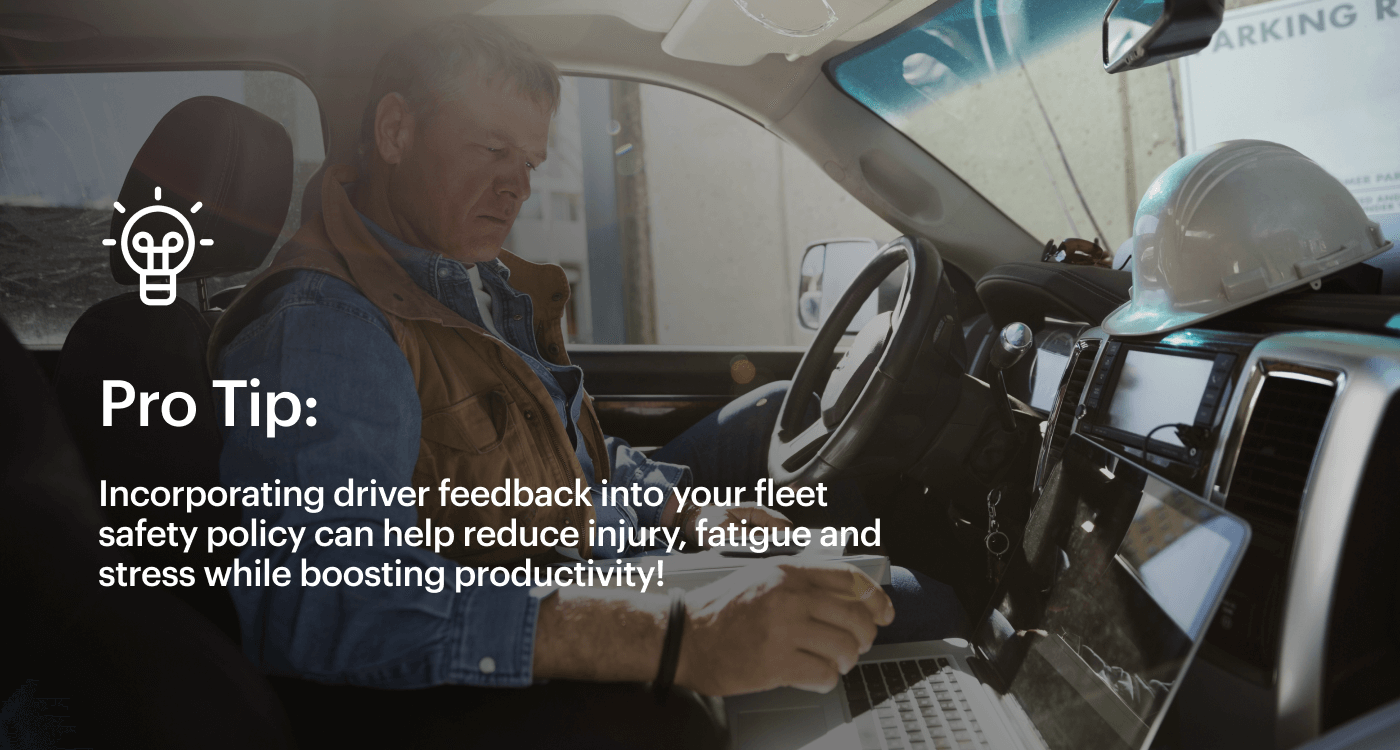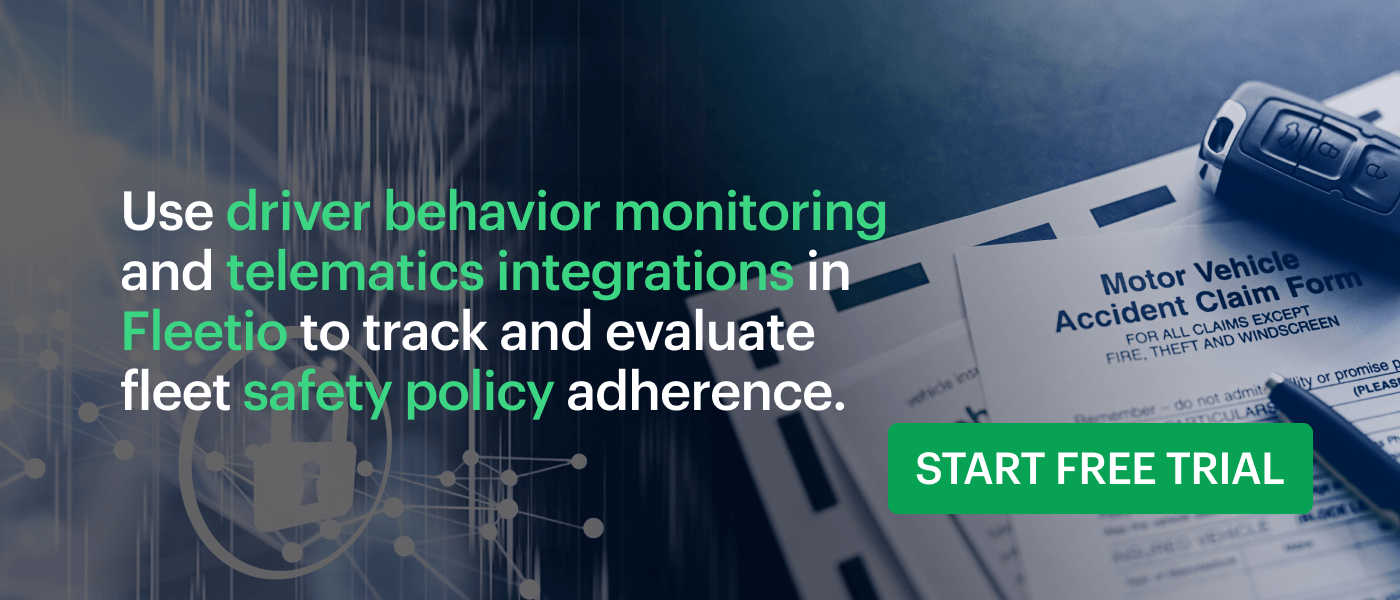Whether you’re updating a current safety policy or creating a new one, integrating driver input and safety concerns can help you tailor your fleet safety policy for maximized productivity.

Customize Your Fleet Safety Policy
Having a fleet safety policy is the best way to ensure that any employees who work with fleet assets are fully aware of what to do and what not to do. Many fleets have a safety policy in place with yearly reviews to update outdated material and further enhance best practices. While standard fleet safety policy templates are available, ideally no two companies’ policy should be the same. A customized policy takes into account the nuances of your fleet, affording you the opportunity of minimizing preventable incidents.
When updating a safety policy or creating a new one, getting input from drivers can enhance driver retention, productivity and overall safety. Utilizing driver input can give you a better understanding of where your safety policy is lacking, such as with driver training materials or post-accident coaching. "Vehicle accidents cost employers $60 billion each year in legal and medical expenses, property damage and lost employee productivity," according to DriveSafe Online. "If you have a large number of drivers racking up high mileage every year, the odds increase dramatically that some members of your fleet will be involved in preventable accidents."

Collaborate with Drivers to Enhance Safety
Fleet safety policies vary in size and scope, and driver-based safety only accounts for a portion of the policy content. Fleets with large diversity among assets—such as with transportation, logistics and construction—will likely have larger policies, as some assets will need different or more stringent safety measures than others. Taking into account feedback from primary users of specific assets can help you identify potential unaddressed gaps in your fleet’s safety policy.
Counter Dangerous Driving with Training
Driver-focused sections in fleet safety policies usually consist of at least spot checks, maintaining current licensing and certifications, vehicle inspection directives and driver training programs. Comprehensive driver training programs should be included in any safety policy, and with many driver safety companies offering convenient online classes, it’s important to choose the safety training program that best fits your fleet’s needs.
Driver input is vital when it comes to choosing the right safety program, as drivers have better insight as to how the current training program stands up to real-world, on-the-job experience. For example, drivers may note that additional defensive driving training is needed on spotting and avoiding distracted or aggressive drivers.
Improve Safety and Wellness with Ergonomics
In addition to driver safety training, improving fleet asset ergonomics should be an area of focus in fleet safety policies. Upfitting or retro-fitting fleet assets for improved ergonomics increases both driver safety and productivity. Furthermore, poor ergonomics can lead to work-related musculoskeletal disorders (MSDs), muscle strain, fatigue, poor circulation and more. According to OSHA, ergonomics "helps lessen muscle fatigue, increases productivity and reduces the number and severity of work-related MSDs."
Some examples of improved ergonomics include:
- Vehicle entrance and exit assists, such as grab handles and steps
- Injury prevention assists, such as ladder rack drop downs, roll-up doors and slip-resistant step covering
- Unloading and loading assists, such as drop ramps and liftgates
- Posture assists, such as lumbar support seats or cushions and upfitted work spaces in the cab (for those whose vehicle may be used as a mobile office)
Incorporating driver feedback into your safety policy is key in locating areas that need improvement. According to Flex Fleet Rental, "If ergonomics are not dealt with and improved, they can also lead to preventable accidents. This is because [poor ergonomics reduces] driver comfort, thus leading to fatigue, which in turn causes accidents due to impaired cognitive function."
Consolidate Driver Feedback with Software
You can make driver feedback easier to track and analyze by creating a custom inspection form using fleet management software. With a customized safety feedback inspection, you can have drivers mark "pass" and "fail" ergonomics items, submit comments on failed items and even include images if needed. Additionally, you can include a "safety training" item for drivers to leave feedback on how the current training program stands up to their personal experience. By including all your safety policy items which require feedback on a single inspection form, you can pull one easy-to-read annual report, giving you clear and actionable insights to improve your fleet safety policy when it comes time to update it.
Find out how Fleetio can help you track your fleet’s safety policy. Start your free trial or request a demo of Fleetio today!




